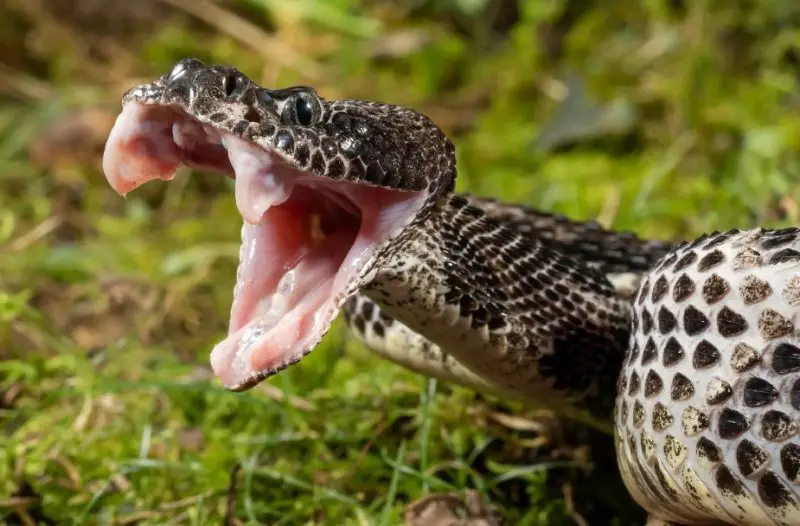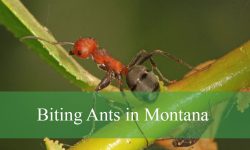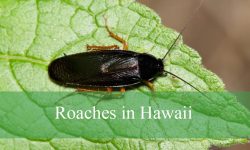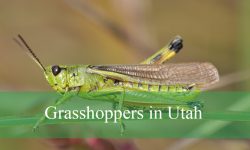Hidden beneath the golden waves of Oklahoma’s expansive grasslands lies a creature that strikes both fear and fascination into the hearts of many—rattlesnakes. These venomous reptiles are more than just a symbol of danger; they are also essential predators in the ecosystem. But how much of what you’ve heard is fact, and how much is folklore?
Oklahoma’s grasslands are more than a scenic landscape—they’re home to rattlesnakes cloaked in mystery. This article reveals their true nature, from behavior and habitat to the myths that often overshadow the facts.
The Unique Grasslands of Oklahoma: A Perfect Habitat

An Overview of the Tallgrass and Mixed Grass Prairies
Oklahoma is home to one of the most diverse landscapes in the United States, and its grasslands play a vital role in that variety. From the Tallgrass Prairie Preserve in the north to the mixed-grass stretches in the western regions, these lands offer a mix of vegetation, burrows, and climatic conditions ideal for snakes seeking shelter and prey.
These wide-open spaces allow rattlesnakes to thrive. With plenty of rodents, birds, and insects available, rattlesnakes rarely need to travel far for a meal. The abundance of cover—tall grasses, brush piles, and rocky outcrops—also ensures they remain mostly unseen to human eyes.
Climate and Seasonal Changes That Favor Snake Activity
The fluctuating climate of Oklahoma, featuring warm summers and mild winters, makes it particularly favorable for cold-blooded animals. During the hot months, rattlesnakes become more active, basking in the sun to regulate their body temperature and hunting during dusk or dawn when prey is most active. In cooler seasons, they seek refuge in underground dens, often shared with other reptiles or small mammals.
These climatic patterns influence not only their behavior but also when humans are most likely to encounter them. Spring and early autumn are especially significant, as snakes emerge from or prepare to enter hibernation.
The Species of Rattlesnakes Found in Oklahoma
The Western Diamondback: A Notorious Resident
Perhaps the most feared and misunderstood of Oklahoma’s rattlesnake population is the Western Diamondback. Known for its bold pattern and powerful venom, it is often found in the western and southern parts of the state. This species prefers dry, open landscapes where it can lie in wait for unsuspecting prey.
Despite its reputation, the Western Diamondback plays a vital role in controlling rodent populations. Its venomous bite is primarily a hunting tool rather than a defensive weapon, and the rattle it famously employs is a warning—meant to avoid confrontation, not invite it.
Prairie Rattlesnakes and Their Elusive Ways
Another notable species in Oklahoma’s grasslands is the Prairie Rattlesnake. Smaller and generally more reclusive than the Western Diamondback, the Prairie Rattlesnake can be found in the open plains of northwestern Oklahoma. Its color often blends seamlessly with dry grasses, making it difficult to spot.
This species tends to avoid human contact whenever possible, using its camouflage and silent retreat as its first line of defense. When cornered, however, it can strike quickly and effectively, relying on speed and venom to deter threats.
Behavior and Daily Life of Rattlesnakes in the Wild
Hunting Tactics and Feeding Habits
Rattlesnakes in Oklahoma’s grasslands employ ambush tactics to catch their prey. Rather than chasing their meals, they coil silently in the grass and wait. Their heat-sensing pits allow them to detect warm-blooded animals even in complete darkness, giving them an advantage during twilight hours.
Once prey is within range, the snake strikes with precision, injecting venom that begins the digestion process almost immediately. The prey is then tracked by scent, consumed whole, and slowly digested over the following days.
Reproduction and Life Cycle in the Wild
Reproduction in rattlesnakes is a seasonal affair, typically taking place in late spring or early summer. Males engage in ritualistic combat to win mates, while females give birth to live young rather than laying eggs. A single litter can contain anywhere from five to twenty baby snakes, depending on the species and environmental conditions.
Young rattlesnakes are born fully functional—with fangs, venom, and instinctual behavior already developed. However, they lack a rattle at birth and develop one after their first shedding. Despite their youth, these snakes can be just as dangerous as adults.
Human Interactions and Misunderstandings
How Common Are Encounters in Grasslands?
While the idea of stepping on a rattlesnake might haunt the dreams of many outdoor adventurers, such encounters are relatively rare. Most people in Oklahoma’s grasslands pass through without ever realizing they were within feet of a rattlesnake. These snakes are naturally shy and prefer to avoid human contact whenever possible.
Incidents involving bites typically occur when someone accidentally steps on a snake or attempts to handle one. In such cases, the bite is defensive, not aggressive. Wearing boots and staying on clear paths significantly reduces the risk of such an encounter.
Rattlesnake Myths That Refuse to Die
A common myth suggests that rattlesnakes always rattle before they strike. In truth, some rattlesnakes may not give any warning at all, especially if surprised. Another popular misconception is that baby rattlesnakes are more dangerous than adults because they can’t control their venom. While juveniles can indeed deliver venomous bites, adults possess more venom and are generally more lethal.
These myths, while widely believed, contribute to unnecessary fear and even aggressive actions against snakes that are simply trying to survive.
Ecological Importance of Rattlesnakes
A Natural Balance Keeper in the Prairie
Rattlesnakes are apex mesopredators within the Oklahoma grassland ecosystem. Their primary diet—mice, rats, and other small mammals—includes species that are often agricultural pests. Without natural predators like rattlesnakes, rodent populations would likely explode, causing ripple effects across the food chain and even leading to crop damage.
In this sense, rattlesnakes serve as silent protectors of balance, controlling populations that, if left unchecked, could impact farmers, landowners, and wildlife alike.
Prey and Predator: A Web of Life
Rattlesnakes also serve as prey for larger animals. Hawks, eagles, and coyotes are known to prey on them, particularly young snakes. Even other snakes—like kingsnakes—are known to feed on rattlesnakes. This intricate web of predator and prey is part of what makes grassland ecosystems so resilient and dynamic.
Eliminating rattlesnakes from the equation could cause unintended consequences, weakening the natural cycles that keep ecosystems healthy.
Conservation Status and Public Perception
Are Rattlesnakes Threatened in Oklahoma?
Despite their adaptability, rattlesnakes face growing threats from habitat loss, road mortality, and organized roundups. Events such as rattlesnake festivals, which often involve the mass killing of snakes, are increasingly being scrutinized by conservationists who argue that these animals are being misrepresented and overharvested.
In some areas, local populations have declined, especially where urbanization has fragmented the grasslands. Conservation efforts aim to educate the public and promote coexistence rather than eradication.
The Role of Education in Shaping Attitudes
Changing the public’s perception of rattlesnakes is no small task. Fear, often rooted in misinformation, continues to drive much of the hostility toward these reptiles. However, educational programs in schools, nature centers, and online platforms are beginning to make a difference.
By teaching people about the ecological role and behavioral patterns of rattlesnakes, more Oklahomans are beginning to understand why these snakes deserve protection rather than persecution.
Safety Tips and Responsible Coexistence
What to Do If You Encounter a Rattlesnake
If you come across a rattlesnake in the wild, the best course of action is simple: stay calm and back away slowly. Most bites occur when people panic, attempt to kill the snake, or corner it. Giving the animal space ensures your safety and allows it to retreat peacefully.
In areas where rattlesnakes are common, wearing high boots, keeping brush cleared around homes, and staying alert on trails are effective preventative measures. Dogs should be kept on leashes to avoid accidental confrontations.
Living Alongside Wildlife With Respect
The key to safe coexistence lies in understanding and respect. Oklahoma’s grasslands are not just a human domain; they are shared with countless other species, each playing a role in the larger ecological picture. Recognizing rattlesnakes as part of this natural system allows for coexistence rooted in knowledge, not fear.
With proper awareness, it’s entirely possible to enjoy the beauty of Oklahoma’s grasslands without fear of its slithering residents.
FAQs About Rattlesnakes in Oklahoma’s Grasslands
Are rattlesnakes active during the day or night?
Rattlesnakes are generally crepuscular, meaning they are most active during dawn and dusk. However, during cooler weather or overcast days, they may be seen basking in the sun during daylight hours.
What should I do if I get bitten by a rattlesnake?
Seek medical help immediately. Do not attempt to suck out the venom or apply a tourniquet. Remain as still and calm as possible to slow the spread of venom.
Can rattlesnakes climb trees or fences?
While primarily ground dwellers, some rattlesnake species are capable climbers and can scale low shrubs or fences. However, such behavior is not common in Oklahoma’s open grasslands.
Are rattlesnake bites fatal?
While rattlesnake bites are serious and painful, fatalities are rare in Oklahoma thanks to prompt medical treatment. Antivenom is effective when administered in time.
Why do rattlesnakes rattle?
Rattling is a defense mechanism meant to warn potential threats. It signals the snake’s presence and encourages avoidance rather than confrontation.
Conclusion: Embracing Truth Over Fear
Rattlesnakes are more than menacing silhouettes on the prairie—they are integral players in the ecology of Oklahoma’s grasslands. Often vilified, frequently misunderstood, these reptiles offer a fascinating glimpse into nature’s design and balance.
By uncovering the truth about rattlesnakes in Oklahoma’s grasslands, we can move past old fears and begin to appreciate these creatures for what they are: survivors, hunters, and keepers of balance in one of America’s most iconic landscapes.






